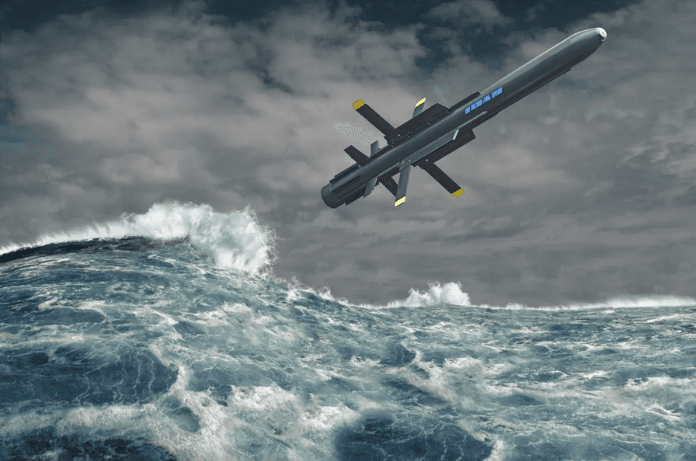Germany is possibly building a groundbreaking project on the naval landscape. Reports claim that this European nation is developing submarines with anti-aircraft missile technology embedded with IDAS; meaning it is developing defense technology against the sub-hunting helicopters. The plan is to develop submarines by 2030 embedded with ingenious interactive technology.
Let’s delve into the details of this innovative project and explore its potential implications for naval defense worldwide.
Submarines with anti-aircraft missiles
Germany is likely developing the world’s first submarine equipped with anti-aircraft missiles. This advancement comes after a German-based company, Thyssenkrupp Marine Systems (TKMS) confirmed on January 23, 2025. It confirmed that it has secured funding for the Interactive Defence and Attack System for Submarines (IDAS). IDAS enables the submerged submarine to actively engage in airborne threats without exposing its own sensors.
Traditionally, submarines have relied on stealth to escape detection, especially from aerial anti-submarine warfare (ASW) platforms like sonar-equipped helicopters. However, advancements in ASW technology have made it increasingly challenging for submarines to remain undetected. Current defensive measures are limited to diving deeper or using oceanic thermal layers but lack active countermeasures against aerial threats.
In response to this growing threat landscape, Bundeswehr is developing an IDAS system in collaboration with industry leaders in defense technology. Thyssenkrupp Marine Systems and Diehl Defence are teaming their expertise in the IDAS Consortium. They will develop a guided missile that can especially encounter air threats from a submerged submarine.
IDAS, A New Standard in Maritime Security
Germany’s navy operates some of the stealthiest diesel-electric subs in the world, and it has been working on a solution to this problem for decades.
The company highlights the decision to incorporate advanced capabilities. It says IDAS sets new standards in maritime security and such an innovative decision to incorporate subs technology originates from the growing reliance on drones, helicopters, and surveillance aircraft in modern naval operations.
Germany’s navy operates some of the stealthiest diesel-electric subs in the world. These aerial assets pose a significant threat to submerged submarines, as they can locate, track, and neutralize them with advanced detection technologies. The Navy has been working on a solution to this problem for decades. Finally wait is over, by equipping submarines with IDAS. Thereby, Bundeswehr aims to create a formidable line of defense against such threats.
“We are thrilled to have secured this contract and to be part of such an innovative project. At Thyssenkrupp Marine Systems, we are proud to contribute to a groundbreaking capability that enhances the self-defense of submarines,” said Oliver Burkhard, CEO of Thyssenkrupp Marine Systems.
When a potential threat condition is identified, the submarine crew can combine an advanced guided missile and a new ejection unit to defend themselves against attacks. The operator can launch the effector as the commanding officer authorizes.
25 Years History of IDAS System
Development of the IDAS system began in the early 2000s, and its first successful underwater test launch took place in 2006. The system’s innovative design earned it a National Defense Technology award in 2007 and raised hopes for rapid production.
However, the IDAS project is commissioned now. It brings the waiting even more closer to reality. While specific details about the IDAS stay mostly anonymous, reports indicate that the IDAS system uses a new ejection container, which stores and ejects them, using a fully integrated separate thrust piston system for every missile.
Originally, the plan was to install IDAS on existing submarines and have it fully operational by 2014. However, ten years later, the German parliament signed a $5 billion funding package to build four new Type 212CD submarines for the German Navy. The package included $26 million to finish development work on IDAS, which will now make its first appearance on the 212CD, reported The Maritime Executive.
A Vision for the Future
The development of this submarine represents a significant leap in naval warfare strategies. It addresses a critical vulnerability that has long haunted submerged submarines. This innovation could also lead to a re-evaluation of naval tactics worldwide. It may spark a new arms race in underwater defense technologies, as other countries seek to match or surpass Germany’s capabilities.
Germany’s initiative to build the world’s first submarine with anti-aircraft missiles underscores its commitment to staying at the forefront of defense innovation. This project enhances the capabilities of its naval fleet. Also, it sets a benchmark for the global defense industry.
As this ambitious endeavor progresses, it will be fascinating to witness how it shapes the future of naval warfare. Will other nations follow suit, or will they seek alternative strategies to counter this new class of submarines? Only time will tell. What remains certain is that this development marks a new chapter in the evolution of military technology. It promises to redefine the dynamics of underwater and aerial combat.

